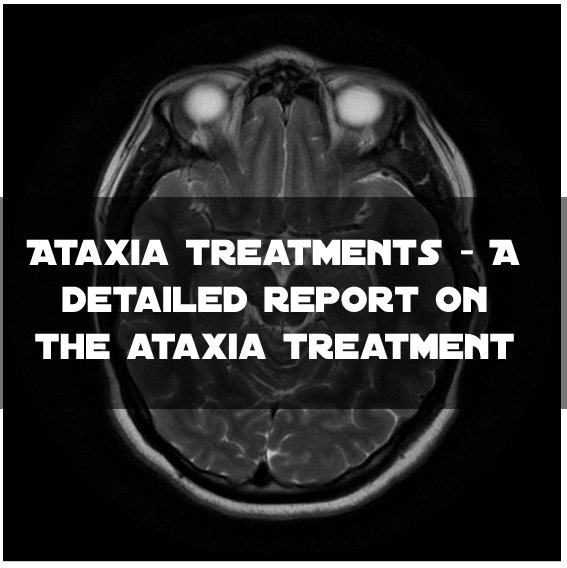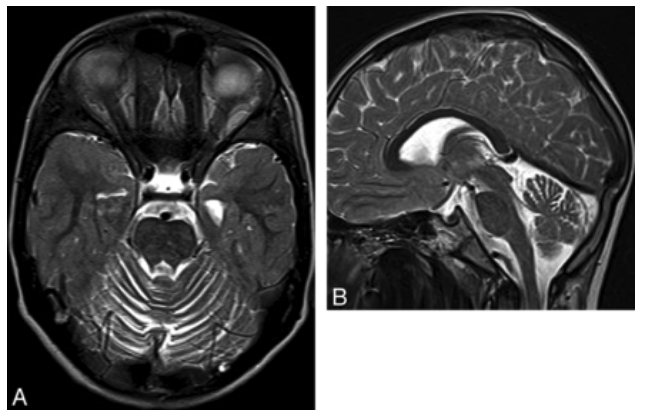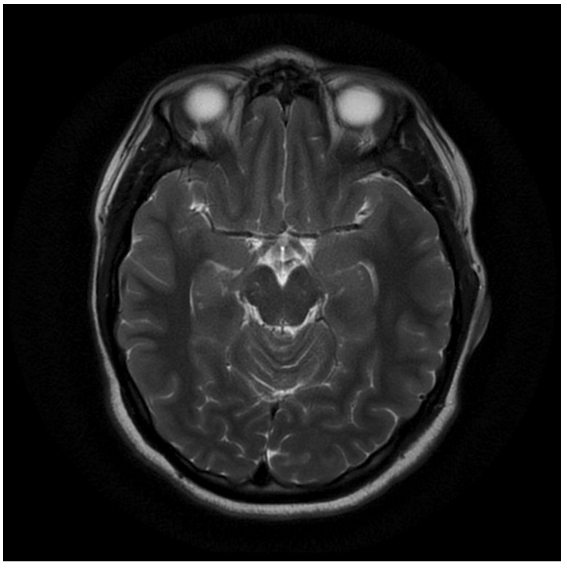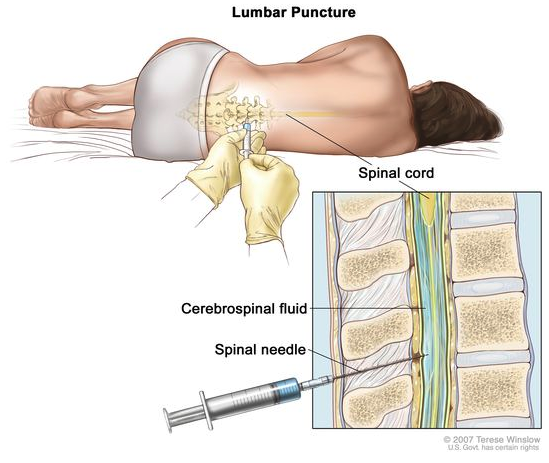Ataxia is a complex neurological condition affecting the body’s coordination, average balance, and sometimes speech. Ataxia is a group of disorders that affects various parts of the human body.
Ataxia falls into several types, including:
- Ataxia telangiectasia
- Episodic ataxia
- Friedreich ataxia
- Multiple system atrophy
- Spinocerebellar ataxia
One must note that ataxia arises due to problems associated with cerebellum damage, and medical science cannot repair damages related to the human brain cells. However, there is a possible treatment plan for ataxia-induced symptoms.
What is ataxia?
Neurology – Ataxia (Gait) – By Wendy Stewart M.D.
Ataxia is a group of neurological conditions happening together. Mainly when the nervous system is not coordinating with the body movements. People affected with ataxia face problems while speaking, walking, and balancing the body.
Cerebellum damage is accountable for ataxia. The brain’s cerebellum is responsible for controlling the coordination between the limbs and balance.
Since brain cells cannot be repaired, ataxia does not have a permanent cure. However, there are always treatments for symptoms of ataxia.
About 150,000 Americans suffer from ataxia.
What are the significant types of ataxia?
Ataxia can be of different types and can affect any age group. Complications related to ataxia can gradually increase in some cases, whereas it can also reduce depending upon the severity of damage to the brain cells. Depending upon the intensity and duration, ataxia can be categorized into various types:
Dominant and recessive
If the condition is inherited from parent to progeny (child), it can be of two types, i.e., dominant and recessive.
Dominant
If the disease is present on a single mutated gene, it is referred to as the dominant gene. That is because a single gene is enough to express the condition in the progeny.
Recessive
Suppose the disease is present in both the mutated genes. Both genes carry the disease, which a single mutated gene couldn’t express.
Ataxia can be both dominant and recessive. However, it can be further classified based on affected body organs.
Friedreich ataxia
When we talk about inherited ataxia, the first type that comes into our head is Friedreich’s ataxia. The affecting rate of this type of ataxia is relatively high, and its symptoms can be spotted at an early age. However, age does not limit its affecting speed; it can also occur in elder individuals.
Signs of Friedreich’s ataxia:
- In case you see movement and balance-related issues with somebody’s body. The person might be too clumsy or whose brain refuses to coordinate with the body’s muscles.
- The patient might face difficulty in speech and cannot pronounce the words correctly.
- Weakness in the legs can be a significant sign of Friedreich’s ataxia, and the person might need support for talking or preferably a wheelchair. There are some excellent wheelchairs available for every patient’s needs, and the patient could go for smart folding power wheelchairs and electric wheelchairs on Rolstoel intelligent wheelchairs.
- Such patients cannot even coordinate peristalsis (movement of the food pipe) and ultimately face swallowing problems.
- The spine of such patients is not always aligned.
- These patients cannot set coordination with the vision and auditory system, leading to blurry vision and inability to hear.
- The walls of or heart muscle problems can occur, leading to angina (sudden chest pain) and irregular heart rate.
- Since all of these senses are controlled by the brain, there is also sensory loss.
The major drawback of Friedreich’s ataxia is that the conditions tend to deteriorate over time, and there is less chance of recovery. People suffering from this complexity tend to have a shorter life span.
Ataxia telangiectasia
Ataxia-telangiectasia is rare inherited ataxia. You might spot its symptoms at an early age.
Ataxia symptoms:
- Inability to walk correctly or balance the body.
- Since the disease affects the younger age group, a child suffering from ataxia might require a wheelchair for movement. One should not compromise in terms of getting a suitable wheelchair. Therefore, you can have a look at Rolstoel intelligent wheels.
- Like Friedreich’s ataxia, children suffering from ataxia-telangiectasia also experience difficulty speaking and swallowing food.
- However, a rare symptom of ataxia telangiectasia is the occurrence of a small outward clump of blood vessels near the borders of a patient’s eyes. It can also occur on the cheeks and other parts of the child’s face.
- There is poor coordination between the patient’s eyes. Therefore, one must put a lot of effort into head movements to look around.
- The patients also have weak immunity and are more susceptible to several forms of cancers, including leukemia.
- The lungs and pulmonary system of the patient are highly affected.
Most symptoms are common in all types of ataxia, including complications while walking or the inability to balance the body.
Episodic ataxia
Another inherited ataxia is episodic ataxia type. Episodic ataxia is the second rare ataxia type in which the symptoms of ataxia are prominent, and the remaining time it appears that the condition does not exist in the patient. Therefore, it is somewhat hard to diagnose without proper medical devices.
Common symptoms of episodic ataxia:
- Difficulty walking and normal balance of the body.
- Ataxia patients cannot speak properly and lack clarity in words.
- Muscle problems include spasms and twitching.
- Inability to control eye movements.
- Vertigo – can be a prominent sign of episodic ataxia. The person might faint or even fall.
- Severe headaches and hearing problems. Sometimes a patient can hear weird noises.
This type of ataxia is less common; however, it can be spotted early. Several environmental factors and caffeine can trigger episodic ataxia; however, the episode lasts a few minutes to hours and is not persistent.
These types of complexities can worsen with time and vice versa. However, one can take medications as a temporary and a permanent cure.
Multiple system atrophy
Multiple system atrophy (MSA), also referred to as Shy-Drager Syndrome, is another type of ataxia form.
The patient goes through a group of disorders, mainly in coordination in body movements, heart rate, and bladder.
The patient suffering from MSA shows the following symptoms:
- Difficulty moving and need for a wheelchair to travel distances. A patient can look for suitable wheelchairs on Rolstoel intelligent wheels for the quality and comfort of the patient.
- Parkinson-like complexities – Mainly amnesia (loss of memory).
- Stiffness in muscles and inability to move limbs properly.
- Poor body posture.
- Impaired speech and low clarity in words.
- A person can also suffer from hypotension (low blood pressure).
Spino-cerebellar ataxia
Spinocerebellar ataxia is another inherited type of ataxia that comprises a group of disorders that appear after adulthood, mainly in the senescence phase, i.e., while aging. However, there is a possibility that spinocerebellar ataxia can also occur in juveniles.
Below you can look for some symptoms of Spinocerebellar ataxia mainly:
- Complications during walking and balancing the body. Usually, patients suffering from spinocerebellar ataxia need wheelchairs to move from one place to another. Such patients should not compromise on the quality and reliability of the wheelchair since it becomes a necessity over time. Therefore you can look at Rolstoel intelligent wheels for quality and comfort of the patient.
- Patients face problems while speaking or slurred speech.
- Dysphagia- inability to swallow food through the esophagus.
- Muscle spasms and stiffness.
- Loss of senses and inability to move limbs properly.
- Extra efforts to move the head and to move the eyes to look around.
- Sometimes can also lead to memory loss since the brain cells are damaged.
- Urinary incontinence- Inability to control urine flow and involuntary urination.
What are the causes of ataxia?
Ataxia is a neuromuscular disorder. The primary cause behind ataxia is the damaged cerebellum and possibly some spinal cord parts.
The cerebellum is responsible for controlling the activities of the body mainly:
- Coordination with body muscles and limbs
- Balance of the body
- Eye movements
- The ability to speak
Therefore, most symptoms of ataxia include disrupted functions controlled by the cerebellum. Sometimes, damage can occur due to a faulty gene or an inherited or hereditary ailment. Acquired ataxia can result from damage to the cerebellum or spinal cord over time. Therefore, it can be classified into two types:
Acquired ataxia
Acquired ataxia can occur due to following reasons:
- Brain stroke or injury
- Alcohol or drug abuse
- Microorganisms and infections cause diseases.
- Excess use of chemicals
- Brain hemorrhage or brain tumor
- Some acquired neurological conditions
Hereditary ataxia
Hereditary ataxias or inherited ataxias occur when a single gene or both the genes transferred from the parent to child are mutated or carry ataxia.
They can be both recessive or dominant, depending upon the type of ataxia.
Other reasons for ataxia can be:
- A stroke
- Vit- B12 (cyanocobalamin) deficit
- Autoimmunity and multiple sclerosis (body cells damage their brain cells)
Diagnosis of Ataxia
To treat ataxia, it is essential first to diagnose the problem. The doctor will carry out several tests, including physical and neurological examinations. Some of the common tests that the patient can undergo include:
Blood tests
A blood test might help the doctor look for the patient’s right therapy.
MRI
Since ataxia is majorly caused due to brain damage, MRI is the most preferred way to test the severity of the problem. It can diagnose the changes the brain has undergone due to the damage. Also, it can detect if the brain of the patient has shrunk or not. Brain hemorrhage and blood clots can also be diagnosed using MRI.
The figure shows an MRI report of a patient suffering from ataxia as you can see atrophy (reduction in the size of decreasing cell volume) of the cerebellum. This depicts a degenerative disorder which means the condition is responsible for damage and reduction in the brain cells.
The above picture shows an MRI of a normal healthy brain. Therefore, you can differentiate between the walls and the lining of both the brain MRI reports. The upper one has a thinner lining whereas, in the second picture, the walls’ lining is quite thick.
Puncturing the lumbar region
Another effective test could be the lumbar puncture test. As the name suggests, doctors puncture the patient’s lumbar region, i.e., in the vertebral column. Slight traces of cerebrospinal fluid (CSF) is collected using a needle. The fluid is later on tested to identify the severity of the disease.
The above picture depicts a physician inserting a needle in the lumbar region to extract CSF from a patient. This technique is also used for several other tests, including the analysis of erythrocytes, lymphocytes, proteins, and glucose levels. Other than that, the test can also be used to diagnose cancer cells.
Genetic testing
Not all ataxias are inherited. Therefore, some types of ataxia can be tested by diagnosing the genetic makeup of the inherited gene.
Several companies offer genetic testing, some of which include:
- Ambrygen
- Athena diagnostics
- B. Braun CeGaT LLC
- Blueprint Genetics
- Centogene
A person can check the official sites of these companies and look for the desired diagnostic tests. Also, the person can book an appointment and discuss it with the doctor in order to get the right guidance.
Treatment of ataxia
A complete ataxia treatment comprises mainly temporary and permanent cures. The temporary cure comprises treating the symptoms of the diseases, whereas a permanent cure is not possible in all types of ataxias. A permanent cure is only possible if the cause behind ataxia is excess or deficiency of a particular component which can be compensated through diet.
Your doctor has a complete treatment plan which is elaborated below:
The treatment plan includes treatment of the symptom or treatment of the cause.
Treatment of the symptoms
A doctor should first be able to distinguish between types of complexities that can or cannot be cured. In order to manage symptoms, look for therapies mentioned below:
Occupational therapy
Occupational therapy mainly comprises acceptance when an individual has lost the ability to move and still continues to work with the disabilities.
In order to move, one can use a portable wheelchair that can make it easy for the person to travel places. It also includes basic habits like using elevators instead of stairs.
A patient should not compromise the quality and comfort of the wheelchair.
Physical therapy
Physical therapy or physiotherapy can help you make your arms and legs mobile and significantly treat muscle stiffness.
Some of the common exercises that might help you include:
- Lying bent knee rotations
- Kneeling press-up
- Quadruped weight shifting
- Quadruped opposite arm and leg extensions
- Sit to stand
A physiotherapist can help you with your exercises and make a complete plan to strengthen muscles and bones. Physical and occupational therapy both are important for curbing the symptoms of ataxia.
Speech therapy
A speech therapist can help you cope with the most prominent symptoms of ataxia, i.e., the inability to speak properly and the inability of the body to perform proper peristalsis (swallowing).
The therapist can help you correctly align your posture, which will help you speak properly.
- The patient should try speaking slowly so that each word comes out clear.
- Breathing ways and techniques can be enhanced to improve the quality of speech.
- Maintaining a certain posture so that the voice comes out clear.
- The patient can be encouraged to play a few word games, which may help in the long run.
A speech therapist can help the patient with facial and breathing exercises to improve speech and curb swallowing problems.
Muscle treatment plan
People suffering from ataxia can frequently experience spasms, stiffness, twitching, and muscle cramps. To treat the symptoms, a physician can prescribe NSAIDs or local anesthetics.
Botox injections can also help to treat the complexity.
Urinary incontinence
Ataxia patients experience continuous or uncontrolled urination.
One can limit the amount of fluid intake, especially tea or coffee. A physician can prescribe medications that block muscarinic receptors and ultimately lead to bladder dilation, which can curb the symptom of urinary incontinence.
Eye-related problems
Patients with ataxia experience the inability to move their eyeballs due to a lack of control over muscles. Whereas, sometimes, the eyes of the patient move involuntarily, which can lead to disrupted or blurry vision.
Eyesight can be corrected by using glasses or lenses. Moreover, the physician can prescribe anticonvulsants like gabapentin.
Heart-related problems
Patients suffering from ataxia can experience angina and arrhythmia, i.e., chest pain and irregular heartbeat.
The patient should keep track of heart health and should get regular checkups. A physician can prescribe beta-blockers or GTN for emergency use.
Erectile dysfunction (ED)
Patients suffering from ataxia can also experience ED due to nerve damage and involuntary muscle control.
One can take Sildenafil (Viagra) which will increase the blood flow.
Nerve pain
Degenerative cerebellar ataxia can also cause nerve pain due to damaged nerve endings. However, nerve pain can be treated by the usage of NSAIDs.
Treatment of the cause
The treatment of some ataxia types can be permanent. Episodic ataxia and acquired ataxia do have a permanent cure, unlike other types.
Vit E (tocopherol) deficiency
Vitamin deficiencies, mainly vitamin E, can also be a reason behind ataxia. Consumption can cure it with multivitamins and supplements. Also, you must not self-medicate because excessive vitamin consumption can lead to various problems.
Episodic ataxia and Acquired ataxia treatment
Since excessive caffeine can trigger episodic ataxia, one can avoid it to prevent ataxia episodes. Stress, alcohol, and certain medications can also trigger episodic ataxia, which can also be controlled or avoided.
Acquired ataxia treatment is only possible after diagnosis, and the cause of the disease can be avoided.
Clinical trials
Clinical trials include diagnosing the disease for longer to find the maximum possible, reliable cures for the ailment. Movement disorders clinical practice can be studied by keeping the patient under observation and coping with the drug demands.
Clinical trials mainly include a group of voluntary individuals that cooperate throughout the treatment to help in finding the right reasons and cure for the disease.
Conclusion
Ataxia is a degenerative syndrome that is associated with damage to brain cells. Some ataxias can be treated. However, inherited ataxias are impossible to cure. Fortunately, the symptoms of ataxia can be treated by medications and some basic exercises. But first, it is important to diagnose the disease, which can be done by a number of techniques, including MRI and lumbar puncture. Several aids have been brought up by science and technology to meet the demands of ataxia patients. The treatment may include the usage of wheelchairs in order to travel from one place to another, using NSAIDs to curb the pain, and wearing glasses to correct the vision. A speech therapist and physiotherapist can help patients cope with physical and verbal incapabilities.




